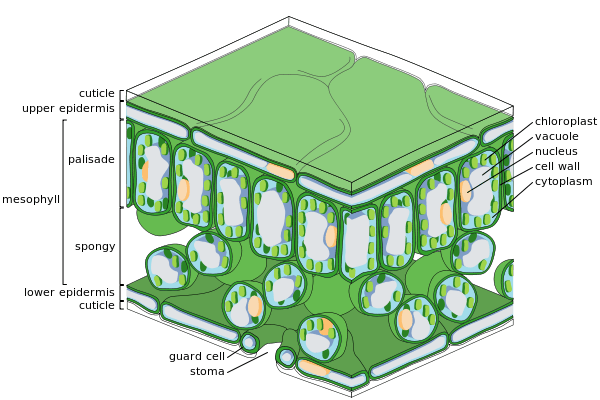Palisade cell

Palisade cells are plant cells located within the mesophyll in leaves, right below the upper epidermis and cuticle. They are vertically elongated, a different shape from the spongy mesophyll cells beneath them in the leaf. Their chloroplasts absorb a major portion of the light energy used by the leaf. Palisade cells occur in dicotyledonous plants, and also in the net-veined monocots, the Araceae and Dioscoreaceae.[1]
Structure
Palisade cells contain the largest number of chloroplasts per cell, which makes them the primary site of photosynthesis in the leaves of those plants that contain them, converting the energy in light to the chemical energy of carbohydrates
Beneath the palisade mesophyll are the spongy mesophyll cells, which also perform photosynthesis. They are irregularly shaped cells that have many intercellular spaces that allow the passage of gases, such as the carbon dioxide needed for photosynthesis.
Palisade cells are chlorenchyma cells, i.e., parenchyma cells containing chloroplasts.
See also
References
- ↑ Higaki, T.; Rasmussen, H.P.; Carpenter, W.J. (1984). A Study of Some Morphological and Anatomical Aspects of Anthurium Andreanum Lind (PDF). HITAHR, College of Tropical Agriculture and Human Resources, University of Hawaii at Manoa.
Holt Science & Technology "Microorganisms, Fungi, and Plants", Holt, Rinehart and Winston